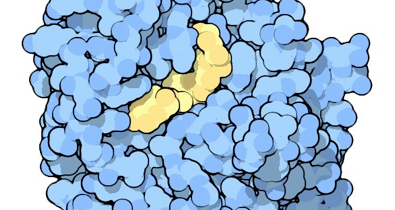Do molecules have a real shape or are they just some kind of random blob like a piece of jello? Well, molecules do have shape (even the molecules that make up jello have shape) and their shape is important. Some molecules, like enzymes (which are proteins), have shapes that help them do their job.
Amino Acids
Proteins are made up of long strings of amino acids. There are about 20 different amino acids that are commonly found in nature and, like DNA, the sequence of amino acids is important. These long strings of amino acids fold up because the amino acids form weak bonds with each other. Each amino acid interacts with a lot of other amino acids in the protein to give it a very specific shape.
Enzymes and Starches
Enzymes like the one that breaks down starch also have a very specific shape that helps them cut long molecules of starch into smaller ones. Starch is a long, skinny molecule made up of lots of molecules of glucose. Starch is about 1.4 nanometers across (a bit less than DNA) and can be more than 10,000 nanometers long!
Nano Grooves
The enzyme that breaks down starch, alpha-amylase, has a deep groove and the starch molecule can fit into that groove. The groove is only 3 nanometers deep (that is 1/30,000 the width of a hair). Once the starch is inside this groove, a special set of amino acids get to work and break the bonds that hold the starch molecule together. It works because of the shape of the enzyme, the way it holds the starch, and those special amino acids being just close enough to do their job. Move those special amino acids away by just a few nanometers and they won’t work anymore.
Changing Molecule Shapes
Take a protein—heat it up and sometimes it loses its shape and then really does form a blob. Just fry an egg and the proteins in the egg white go from being almost clear to white, the proteins forming blobs that no longer stay in solution. The same kind of thing happens when you make cheese: the milk proteins form blobs and you get a curd.
A Molecule’s Active Site
The groove in the enzyme and the special amino acids work together to form what is called the “active site.” The active site of every enzyme is different, but each active site has a unique shape that makes it easy to hold whatever molecule is being worked on and a special set of amino acids to actually do the work.

